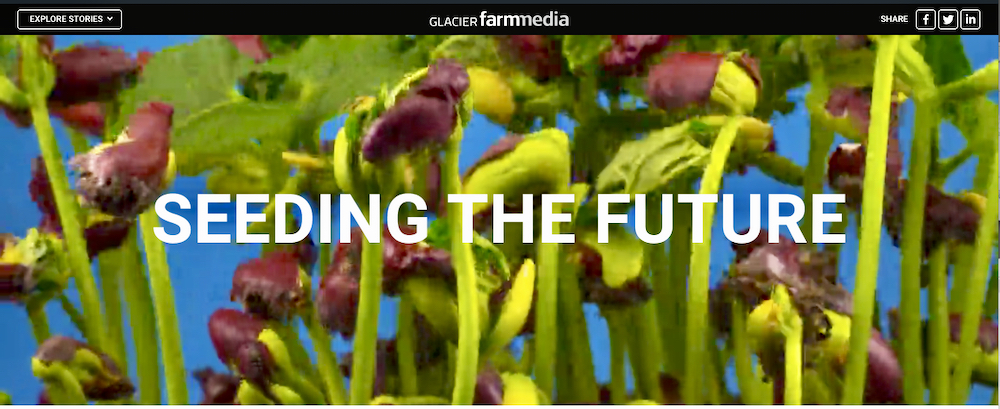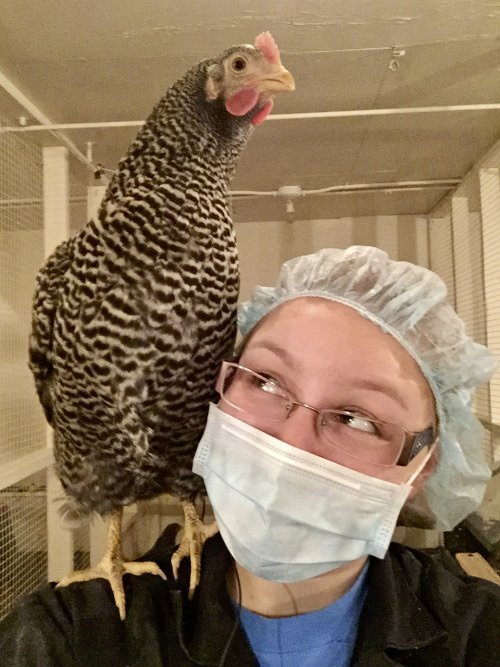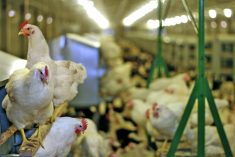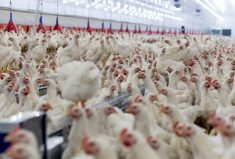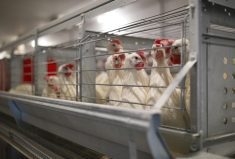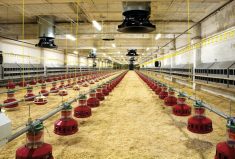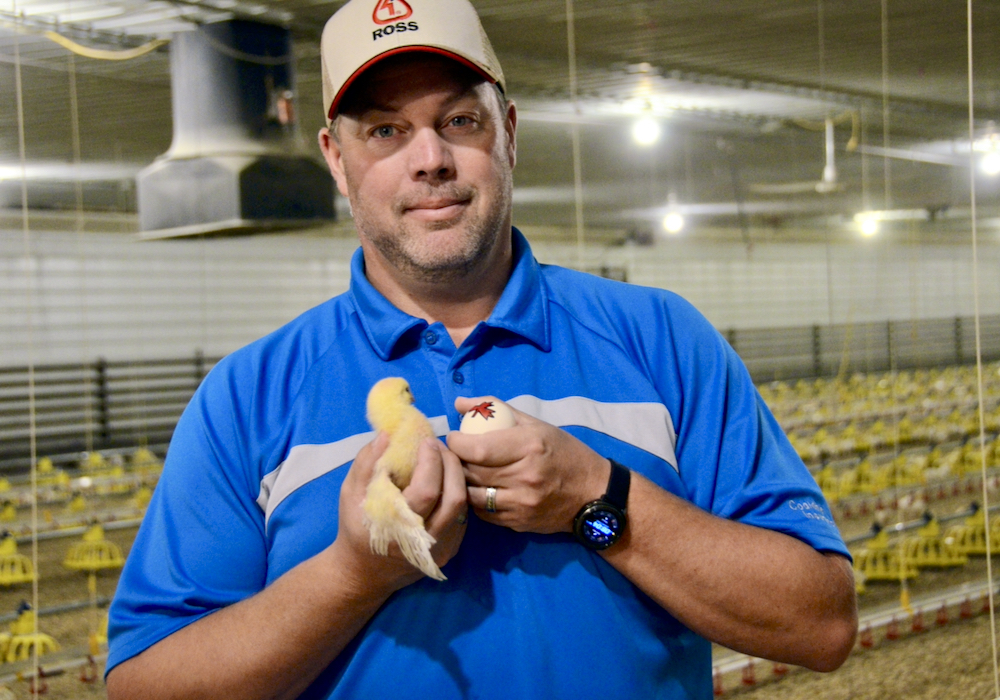They’re a living piece of Canada’s history and a potentially invaluable genetic resource — but the University of Alberta’s heritage chickens are also proving adept at dodging the budget axe.
“They’re living museums,” said Dawn Hage, co-ordinator of the university’s heritage chicken program. “It’s like a snapshot of the kinds of chickens that you would have seen in backyards in the ’20s and ’30s. They’re very different from the chickens of today, and we don’t want to lose those genetics.”
The collection — which includes breeds such as Light Sussex, Rhode Island Red, and Barred Plymouth Rock — began in the late 1980s, when the university took on some breeds from the University of Saskatchewan’s heritage chicken program, which was undergoing budget cuts at the time.
“When you have a commercial line of chickens, you tend to have one type of breed, and over time, they’ve been selected for their meat or their eggs,” said Hage. “But what happens is these heritage breeds — the breeds that everybody used to raise in their backyards — fall to the wayside, and the fear is that they could disappear if there’s nobody raising them in any great numbers and there’s not a lot of interest in them.”
Six breeds, including a Barred Plymouth Rock line that went back to 1910, made the journey from Saskatchewan and in the 1990s, were joined by three ‘random bred’ lines from Agriculture and Agri-Food Canada that acted as a benchmark for what chickens were like at certain times (one from 1957 and two from 1977).
Then Don Shaver — arguably the most influential poultry breeder who ever lived — approached the program about maintaining some of his breeds. The Ontario native had spent his life reshaping the poultry industry from the ground up, crossing the best-performing chickens he could find to develop Starcross 288, a prolific breed of laying hen that changed the laying industry worldwide.
But Shaver, who died in 2018, was also concerned about conserving the genetics in case they were ever needed.
“Genetic diversity is really important,” said Hage. “If something were to happen to the lines that are in commercial farming, there’s a backup if we’ve got some other genetics.”
The biggest test
And then came a series of unprecedented budget cuts at U of Alberta. Over the past three years, the province has slashed the university’s operating grant by one-quarter — a whopping $170 million.
But a decision made a decade ago that the birds should help pay their own way has proven to be their saviour.
“They’re not like a commercial flock where there’s returns on the flock that would help pay for them,” said Hage. “So the Adopt-a-Chicken program was started as a way to help provide some funding to maintain these rare breeds that are in the poultry unit at the south campus.”

Around 500 supporters register for the program each November, paying a flat fee to receive a dozen eggs every two weeks from the hens starting in January.
“I try to put an assortment of all the different breeds in the cartons,” said Hage. “That’s kind of fun — they’re getting different colours and different sizes.”
The program also does chick sales every year in partnership with Peavey Mart, as well as courses in keeping small flocks. At the end of the lay, the hens are processed and sold as stewing meat. The money from these fundraisers goes toward the flock’s maintenance — but even then, the funding to support the program has got tighter in recent years.
“In the last few years, we have had some budget issues,” said Hage. “We had a deficit and massive cuts to the university. So we have done some of this fundraising to try and get the birds out of the red.”
The pandemic brought a surge of interest in keeping backyard flocks, and that helped to keep the financial wolf away from the heritage chicken coop.
“Interest in small flocks has exploded,” said Frank Robinson, a professor of poultry production and physiology at the university.
“People are getting back to raising their own chickens. The hatcheries sold out very early, more than usual, and we had more requests than we had chickens this year.”
Online courses on small-flock poultry also sold out last year, said Hage.
“The chicks that we sold and the courses we offered were really, really popular,” she said. “There were a lot of people wanting to buckle down and manage on their own because of things running out on the grocery shelves. So there was definitely a surge of interest in backyard chickens.”
Demand dipped a little in 2021: “It’s just like the pandemic puppies — I think some people realized it’s a big commitment and a lot of work.” But even so, the heritage chicken program was able to reduce its deficit significantly.
“It’s almost gone,” said Hage. “It’s been a lot of work, and it’s been super hard with the pandemic. But I was really pleased that people would come and support us anyhow, even though the only way we could hand out eggs was to have them pull up outside and hand the eggs to them through their car windows.
“We did that in 40 below in January, which wasn’t the most fun, but people hung in and we were still able to sell out the program.”
Keeping history alive
There are now 11 different heritage breeds in the program, and in addition to preserving their genetics as an insurance policy, the birds are also useful for researchers.
“Commercial birds are basically like cars in that every year a new model comes out and we don’t save the old ones. So we started using them in research as benchmarks to see how the birds have changed,” said Robinson.
“The third objective also happened by chance — use in public education. We have the heritage chicken program where people can adopt chickens, and those people are hungry for knowledge. So we have used those chickens as a teaching tool, too.”
But keeping history alive like this means, quite literally, keeping history alive, and that isn’t cheap.
“If you collect old cars, you can go to Wetaskiwin and build a museum for old cars and that’s it,” said Robinson. “But if you collect old animals, you have to maintain them, and that’s very expensive.”
For Hage, it’s a little poetic, in a way — people keeping these small flocks in their backyards are the ones helping to maintain heritage breeds that would have been found in backyards 100 years ago.
That’s something she couldn’t see happening before the pandemic.
“It hasn’t been easy. There was a period for a while there where we thought we couldn’t continue to do it. But we’re still going strong, despite everything.”
The 2022 edition of the Adopt-a-Chicken program is now open. For details or to learn more about the breeds in the program, go to heritagechickens.ualberta.ca.
The Secret of Starcross 288
Donald Shaver was, quite simply, a remarkable man. To learn more about him and his groundbreaking breeding work, see ‘The Secret of Starcross 288,’ which is part of the ‘Seeding the Future’ multimedia project. It can be found at gfmdigital.com or by clicking the ‘Seeding the Future’ image below.
